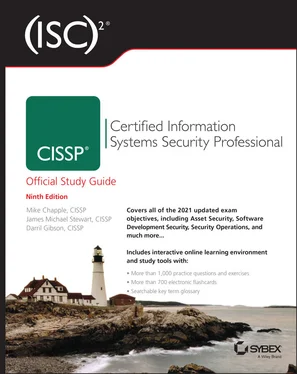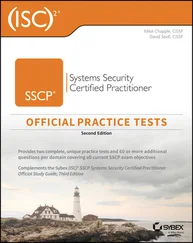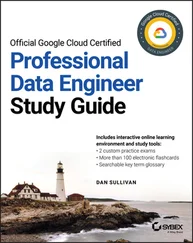Each authentication technique or factor has its unique benefits and drawbacks. Thus, it is important to evaluate each mechanism in light of the environment in which it will be deployed to determine viability. We discuss authentication at length in Chapter 13, “Managing Identity and Authentication.”
Once a subject is authenticated, access must be authorized. The process of authorization ensures that the requested activity or access to an object is possible given the rights and privileges assigned to the authenticated identity. In most cases, the system evaluates the subject, the object, and the assigned permissions related to the intended activity. If the specific action is allowed, the subject is authorized. If the specific action is not allowed, the subject is not authorized.
Keep in mind that just because a subject has been identified and authenticated does not mean they have been authorized to perform any function or access all resources within the controlled environment. Identification and authentication are all-or-nothing aspects of access control. Authorization has a wide range of variations between all or nothing for each object within the environment. A user may be able to read a file but not delete it, print a document but not alter the print queue, or log on to a system but not access any resources. Authorization is discussed in Chapter 13.
Auditing is the programmatic means by which a subject's actions are tracked and recorded for the purpose of holding the subject accountable for their actions while authenticated on a system through the documentation or recording of subject activities. It is also the process by which unauthorized or abnormal activities are detected on a system. Auditing is recording activities of a subject and its objects as well as recording the activities of application and system functions. Log files provide an audit trail for re-creating the history of an event, intrusion, or system failure. Auditing is needed to detect malicious actions by subjects, attempted intrusions, and system failures and to reconstruct events, provide evidence for prosecution, and produce problem reports and analysis. Auditing is usually a native feature of operating systems and most applications and services. Thus, configuring the system to record information about specific types of events is fairly straightforward.
 Monitoring is part of what is needed for audits, and audit logs are part of a monitoring system, but the two terms have different meanings. Monitoring is a type of watching or oversight, whereas auditing is a recording of the information into a record or file. It is possible to monitor without auditing, but you can't audit without some form of monitoring.
Monitoring is part of what is needed for audits, and audit logs are part of a monitoring system, but the two terms have different meanings. Monitoring is a type of watching or oversight, whereas auditing is a recording of the information into a record or file. It is possible to monitor without auditing, but you can't audit without some form of monitoring.
An organization's security policy can be properly enforced only if accountability is maintained. In other words, you can maintain security only if subjects are held accountable for their actions. Effective accountability relies on the capability to prove a subject's identity and track their activities. Accountability is established by linking an individual to the activities of an online identity through the security services and mechanisms of auditing, authorization, authentication, and identification. Thus, individual accountability is ultimately dependent on the strength of these processes. Without a strong authentication process, there is doubt that the person associated with a specific user account was the actual entity controlling that user account when the undesired action took place.
To have viable accountability, you must be able to support your security decisions and their implementation in a court of law. If you are unable to legally support your security efforts, then you will be unlikely to be able to hold an individual accountable for actions linked to a user account. With only a password as authentication, there is significant room for doubt. Passwords are the least secure form of authentication, with dozens of different methods available to compromise them. However, with the use of multifactor authentication, such as a password, smartcard, and fingerprint scan in combination, there is very little possibility that any other individual could have compromised the authentication process in order to impersonate the person responsible for the user account.
Another aspect of understanding and applying security controls is the concept of protection mechanisms or protection controls. Not all security controls must have them, but many controls offer their protection through the use of these mechanisms. Some common examples of these mechanisms are defense in depth, abstraction, data hiding, and using encryption.
Defense in depth , also known as layering , is the use of multiple controls in a series. No one control can protect against all possible threats. Using a multilayered solution allows for numerous different controls to guard against whatever threats come to pass. When security solutions are designed in layers, a single failed control should not result in exposure of systems or data.
Using layers in a series rather than in parallel is important. Performing security restrictions in a series means to perform one after the other in a linear fashion. Only through a series configuration will each attack be scanned, evaluated, or mitigated by every security control. In a series configuration, failure of a single security control does not render the entire solution ineffective. If security controls were implemented in parallel, a threat could pass through a single checkpoint that did not address its particular malicious activity.
Serial configurations are very narrow but very deep, whereas parallel configurations are very wide but very shallow. Parallel systems are useful in distributed computing applications, but parallelism is not often a useful concept in the realm of security.
Within the context of defense in depth, in addition to the terms levels, multilevel, and layers, other terms that are often used in relation to this concept are classifications, zones, realms, compartments, silos, segmentations, lattice structure, and protection rings. You will see these terms used often throughout this book. When you see them, think about the concept of defense in depth in relation to the context of where the term is used.
Abstraction is used for efficiency. Similar elements are put into groups, classes, or roles that are assigned security controls, restrictions, or permissions as a collective. Abstraction simplifies security by enabling you to assign security controls to a group of objects collected by type or function. Thus, the concept of abstraction is used when classifying objects or assigning roles to subjects.
Abstraction is one of the fundamental principles behind the field known as object-oriented programming. It is the unknown environment doctrine that says that users of an object (or operating system component) don't necessarily need to know the details of how the object works; they need to know just the proper syntax for using the object and the type of data that will be returned as a result (that is, how to send input and receive output). This is very much what's involved in mediated access to data or services, such as when user mode applications use system calls to request administrator mode services or data (and where such requests may be granted or denied depending on the requester's credentials and permissions) rather than obtaining direct, unmediated access.
Читать дальше

 Monitoring is part of what is needed for audits, and audit logs are part of a monitoring system, but the two terms have different meanings. Monitoring is a type of watching or oversight, whereas auditing is a recording of the information into a record or file. It is possible to monitor without auditing, but you can't audit without some form of monitoring.
Monitoring is part of what is needed for audits, and audit logs are part of a monitoring system, but the two terms have different meanings. Monitoring is a type of watching or oversight, whereas auditing is a recording of the information into a record or file. It is possible to monitor without auditing, but you can't audit without some form of monitoring.










